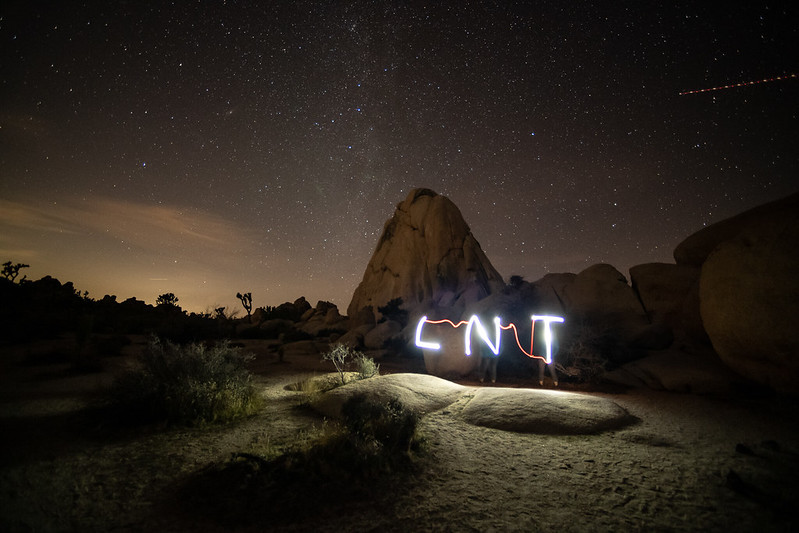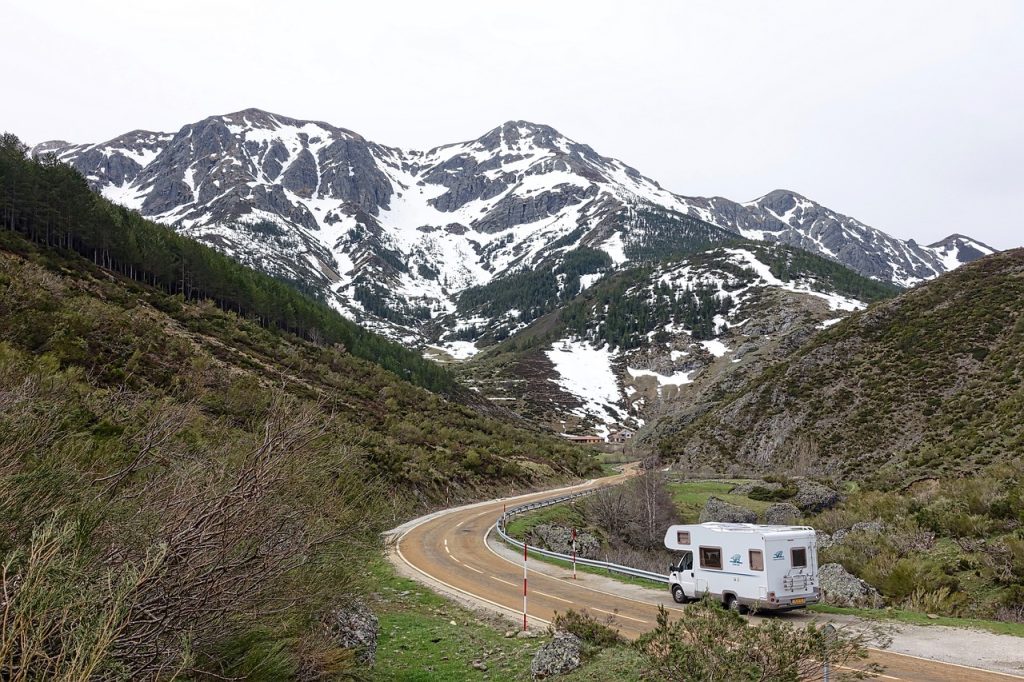Imagine setting up camp amidst nature’s grandeur, with the sun setting over a remote mountain range. This is the essence of boondocking – a blend of adventure and tranquility. As you breathe in the crisp mountain air and gaze at the star-studded sky, you feel a sense of peace and freedom that is unmatched by any other camping experience.
Whether you’re a seasoned RVer seeking new adventures or a curious beginner eager to explore the off-grid world, this guide is your comprehensive companion to the best free camping experiences across the United States. Boondocking is appealing to a diverse audience, including:
- RV Types: Class A, B, C, trailers, and all types of recreational vehicles are welcome. Learn more about different RV types
- Experience Levels: Whether you’re a seasoned RVer or a first-time boondocker, we’ve got you covered. Check out beginner tips for RVing
- Specific Interests: Solitude seekers, adventure enthusiasts, and nature lovers will find plenty of inspiration at the National park Service.
Nelson Creek Recreation Area – Boondocking Camping/RV Spot via Tony Webster / flickr
Understanding Boondocking: The Essentials
- Definition: Boondocking is the practice of camping in remote areas on public lands without access to hookups or amenities. This means you’ll need to be self-sufficient and have all the necessary supplies to last the duration of your stay.
- Scope of Guide: This guide will provide you with everything you need to know to plan and execute a successful boondocking trip, including:
- The best boondocking locations in the United States, organized by region and landscape.
- Essential gear and tips for boondocking.
- Safety considerations for camping in the wild.
- Responsible camping practices to minimize your impact on the environment. Read about Leave No Trace principles.
Discovering the Best Boondocking Sites: A Regional Adventure
Moon Falls, Umpqua National Forest via US Forest Service / flickr
Pacific Northwest: A Realm of Emerald Beauty
The Pacific Northwest is a haven for nature lovers, with its lush forests, rugged coastlines, and majestic mountains offering countless boondocking possibilities. Whether you’re seeking solitude amidst towering evergreens or the thrill of camping near crashing waves, the Pacific Northwest has something for everyone.
Key Boondocking Sites in the Pacific Northwest:
- Umpqua National Forest, Oregon:
- Umpqua National Forest, Oregon boondocking site
- Nestled in the heart of Oregon’s Cascade Mountains, Umpqua National Forest offers a diverse range of boondocking sites, from tranquil meadows to secluded riverbanks. Explore the scenic Umpqua River Valley or venture higher into the mountains for stunning vistas of Mount Rainier.
- Olympic National Park, Washington:
- Olympic National Park, Washington boondocking site
- Immerse yourself in the grandeur of Olympic National Park, where boondocking sites provide access to towering rainforests, pristine lakes, and snow-capped peaks. Hike through the enchanting Hoh Rainforest, discover hidden waterfalls along the Elwha River Trail, or camp near the shores of Lake Crescent for a serene retreat.
- Crater Lake National Park, Oregon:
-
-
- Crater Lake National Park, Oregon boondocking site
-
- Experience the awe-inspiring beauty of Crater Lake National Park, where boondocking sites offer stunning views of the caldera and its cobalt-blue waters. Take in the panoramic vistas from Wizard Island, hike to the rim of the caldera for a closer look, or camp near the lake for a peaceful night under the stars.
-
- Siuslaw National Forest, Oregon:
- Siuslaw National Forest, Oregon boondocking site
- Discover hidden gems within Siuslaw National Forest, where boondocking sites provide access to coastal beaches, ancient forests, and cascading waterfalls. Explore the rugged Oregon Coast, hike among towering trees in the forest, or relax by the soothing sounds of a waterfall.
- Gifford Pinchot National Forest, Washington:
- Gifford Pinchot National Forest, Washington boondocking site
- Explore the vast wilderness of Gifford Pinchot National Forest, where boondocking sites offer opportunities for hiking, fishing, and wildlife viewing amidst stunning mountain scenery. Hike to the summit of Mount Adams for breathtaking views, cast a line in one of the many lakes and streams, or spot wildlife like deer, elk, and bears.
Canyonlands National Park – Pothole Point Trailhead via Matthew Dillon / flickr
Southwest: A Land of Rugged Beauty and Vibrant Culture
The Southwest United States is a land of captivating contrasts, where towering cacti stand amidst rolling plains, and vibrant sunsets paint the sky in hues of orange, purple, and pink. For boondockers seeking adventure and a taste of the American West, the Southwest offers an abundance of opportunities.
Notable Campgrounds in the Southwest:
- Canyonlands National Park, Utah:
- Canyonlands National Park, Utah boondocking site
- Immerse yourself in the grandeur of Canyonlands National Park, where boondocking sites provide access to breathtaking canyons, mesas, and buttes. Camp near The Needles overlook for panoramic views, hike through the Maze District for a secluded experience, or explore the Island in the Sky for a taste of solitude and stunning landscapes.
- Death Valley National Park, California:
-
- Death Valley National Park, California boondocking site
- Venture into the heart of Death Valley National Park, where boondocking sites offer a unique blend of rugged beauty and historical significance. Camp near Zabriskie Point for stunning views of the valley floor, explore the Badwater Basin salt flats, or hike to the top of Dante’s View for a panoramic vista.
-
- BLM Lands, Arizona:
- BLM Lands, Arizona boondocking site
- Arizona’s vast Bureau of Land Management (BLM) lands offer a treasure trove of boondocking opportunities, from the Painted Desert to the Petrified Forest. Explore the otherworldly landscapes of the Vermilion Cliffs National Monument, discover ancient petroglyphs in the Verde Valley, or camp amidst the towering saguaros of the Sonoran Desert.
- Arches National Park, Utah:
- Arches National Park, Utah boondocking site
- Marvel at the natural wonders of Arches National Park, where boondocking sites provide access to iconic landmarks like Delicate Arch and Landscape Arch. Camp near Delicate Arch for a close-up view of this iconic formation, hike to Landscape Arch for a glimpse of its delicate beauty, or explore the park’s numerous arches and buttes.
Great Smoky Mountains National Park via y Doug Kerr via flickr
Southeast: A Tapestry of Nature, Culture, and History
The Southeast United States is a region teeming with history, culture, and natural beauty. From the lush forests of the Appalachian Mountains to the tranquil beaches of the Gulf Coast, the Southeast offers a diverse range of boondocking experiences.
Boondocking Sites in the Southeast:
- Great Smoky Mountains National Park, North Carolina and Tennessee:
- Great Smoky Mountains National Park, North Carolina and Tennessee boondocking site
- Immerse yourself in the grandeur of Great Smoky Mountains National Park, where boondocking sites provide access to stunning mountain views, cascading waterfalls, and diverse wildlife. Camp near Clingmans Dome for breathtaking views, hike to Laurel Falls for a refreshing waterfall experience, or explore the park’s numerous trails and scenic overlooks.
- Oconee National Forest, Georgia:
- Oconee National Forest, Georgia boondocking site
- Escape the hustle and bustle of city life in Oconee National Forest, where boondocking sites offer a tranquil retreat amidst towering pines and serene lakes. Camp near the shores of Lake Oconee for swimming, fishing, and boating opportunities, explore the forest’s hiking trails, or simply relax and enjoy the peace and quiet of the natural surroundings.
- Congaree National Park, South Carolina:
- Congaree National Park, South Carolina boondocking site
- Discover the lush beauty of Congaree National Park, where boondocking sites provide access to one of the largest remaining old-growth bottomland hardwood forests in the United States. Hike through the park’s towering cypress trees, paddle along the Congaree River, or camp near the riverbank for a peaceful retreat.
- Apalachicola National Forest, Florida:
- Apalachicola National Forest, Florida boondocking site
- Explore the unspoiled wilderness of Apalachicola National Forest, where boondocking sites offer a chance to immerse yourself in the natural beauty of the Florida Panhandle. Camp near the shores of the Apalachicola River for fishing and kayaking opportunities, hike through the forest’s diverse ecosystems, or simply relax and enjoy the tranquility of the natural surroundings.
- Big Thicket National Preserve, Texas:
- Big Thicket National Preserve, Texas, boondocking site
- Venture into the heart of Big Thicket National Preserve, where boondocking sites provide access to a unique blend of ecosystems, including pine forests, hardwood forests, and wetlands. Hike through the preserve’s diverse trails, spot wildlife like deer, alligators, and birds.
Devils Island Lighthouse at Apostle Islands National Park via Jim Sorbie / flickr
Midwest: A Region of Seasonal Charm and Natural Beauty
The Midwest United States is a land of rolling hills, tranquil lakes, and vibrant farmlands. With its distinct seasons, the Midwest offers a variety of boondocking experiences, from the lush greenery of summer to the snow-covered landscapes of winter.
Seasonal Attractions and Boondocking Sites in the Midwest:
Spring:
- Indiana Dunes National Park, Indiana:
- Indiana Dunes National Park, Indiana boondocking site
- Embark on a spring adventure in Indiana Dunes National Park, where boondocking sites provide access to sandy beaches, towering sand dunes, and serene marshes. Hike through the dunes for stunning views of Lake Michigan, explore the wetlands for diverse wildlife encounters, or simply relax and enjoy the sounds of the waves crashing on the shore.
- Hocking Hills State Park, Ohio:
- Hocking Hills State Park, Ohio boondocking site
- Immerse yourself in the natural beauty of Hocking Hills State Park, where boondocking sites offer a chance to explore cascading waterfalls, rock formations, and ancient caves. Hike to the base of Old Man’s Cave for a breathtaking view, explore the depths of Hocking Hills Cave, or simply relax near a waterfall for a peaceful retreat.
Summer:
- Apostle Islands National Park Lakeshore, Wisconsin:
- Apostle Islands National Park Lakeshore, Wisconsin boondocking site
- Discover the pristine beauty of Apostle Islands National Lakeshore, where boondocking sites provide access to a network of 22 islands in Lake Superior. Kayak or boat among the islands, explore the sea caves and cliffs, or simply relax on a secluded beach for a tranquil summer escape.
- Palisades State Park, Iowa:
- Palisades State Park, Iowa boondocking site
- Enjoy the scenic beauty of Palisades State Park, where boondocking sites offer stunning views of the Des Moines River and the surrounding bluffs. Hike or bike along the park’s trails, explore the Devil’s Backbone rock formation, or simply relax and enjoy the sights and sounds of the river.
Fall:
- Pictured Rocks National Lakeshore, Michigan:
- Pictured Rocks National Lakeshore, Michigan boondocking site
- Experience the vibrant colors of fall in Pictured Rocks National Lakeshore, where boondocking sites provide access to sandstone cliffs, waterfalls, and colorful forests. Hike along the shore to witness the stunning rock formations, kayak in the clear waters of Lake Superior, or simply relax and enjoy the beauty of the changing leaves.
- Mammoth Cave National Park, Kentucky:
- Mammoth Cave National Park, Kentucky boondocking site
- Venture into the depths of Mammoth Cave National Park, where boondocking sites offer a unique underground adventure. Explore the vast cave system with a guided tour, hike through the park’s forests, or simply relax and enjoy the tranquility of the natural surroundings.
Winter:
- Voyageurs National Park, Minnesota:
- Voyageurs National Park, Minnesota boondocking site
- Embrace the winter wonderland of Voyageurs National Park, where boondocking sites provide access to frozen lakes, snow-covered forests, and serene landscapes. Go ice skating or snowshoeing on the lakes, cross-country skiing through the trails, or simply relax and enjoy the quiet beauty of the winter season.
- Sleeping Bear Dunes National Lakeshore, Michigan
- Sleeping Bear Dunes National Lakeshore, Michigan boondocking sites
- Experience the winter magic of Sleeping Bear Dunes National Lakeshore, where boondocking sites offer access to snow-covered sand dunes, frozen lakes, and scenic views.
Champlain Summit, Acadia National Park via John Manard / Flickr
Northeast: A Haven for Wildlife Enthusiasts and Nature Lovers
The Northeast United States is a region of captivating contrasts, where rugged coastlines meet towering mountains, and bustling cities blend seamlessly with tranquil landscapes. For boondockers seeking a taste of New England charm and diverse natural beauty, the Northeast offers an abundance of opportunities.
Boondocking Sites for Wildlife Enthusiasts and Nature Lovers in the Northeast:
- Acadia National Park, Maine:
- Acadia National Park, Maine boondocking site
- Immerse yourself in the grandeur of Acadia National Park, where boondocking sites provide access to stunning mountain vistas, pristine lakes, and rugged coastline. Hike to the summit of Cadillac Mountain for breathtaking views, explore the park’s diverse ecosystems, or simply relax and enjoy the tranquility of the natural surroundings.
- Katahdin Woods and Waters National Monument, Maine:
- Katahdin Woods and Waters National Monument, Maine boondocking sites
- Venture into the vast wilderness of Katahdin Woods and Waters National Monument, where boondocking sites offer a chance to experience the solitude of the Maine woods. Hike to the summit of Mount Katahdin, the highest point in Maine, paddle along pristine lakes, or simply relax and enjoy the peace and quiet of the forest.
- Adirondack Park, New York:
- Adirondack Park, New York boondocking site
- Discover the unspoiled beauty of Adirondack Park, where boondocking sites provide access to towering mountains, crystal-clear lakes, and abundant wildlife. Hike to the summit of Mount Marcy, the highest point in New York State, canoe or kayak through the lakes, or simply relax and enjoy the tranquility of the park’s wilderness.
- White Mountain National Forest, New Hampshire:
- White Mountain National Forest, New Hampshire boondocking site
- Explore the grandeur of White Mountain National Forest, where boondocking sites offer access to stunning mountain peaks, cascading waterfalls, and diverse ecosystems. Hike to the summit of Mount Washington, the highest peak in the Northeast, camp near the shores of Crawford Pond, or simply relax and enjoy the breathtaking scenery.
- Green Mountain National Forest, Vermont:
- Green Mountain National Forest, Vermont boondocking site
- Discover the tranquility of Green Mountain National Forest, where boondocking sites offer access to rolling hills, serene lakes, and diverse wildlife. Hike through the forest’s trails, explore the Long Trail for a backpacking adventure, or simply relax and enjoy the peace and quiet of the natural surroundings.
Navigate with Confidence: Detailed Maps and Immersive Imagery
Detailed Maps: These visual aids will serve as your trusty companions, guiding you to each selected boondocking site and allowing you to immerse yourself in the scenic beauty of these locations before you even embark on your journey.
- USGS Maps: The U.S. Geological Survey provides a range of topographic maps that are invaluable for navigating through diverse terrains. Whether you’re heading into the mountains or exploring coastal areas, these maps offer the detail you need.
-
Online Interactive Maps for Boondocking: One big challenge with boondocking is finding nice, remote, beautiful, ACCESSIBLE and legal places to park. And that’s where maps come in.
- AllStays Camp & RV: For a comprehensive resource specifically designed for RV travelers, check out AllStays Camp & RV, which provides detailed information on campgrounds, RV parks, and services.
- High-Quality Images: Complementing the detailed maps are stunning high-quality images that showcase the captivating beauty of each boondocking site. These images will transport you to the heart of these wilderness havens, allowing you to envision yourself amidst the towering trees, serene lakes, and breathtaking landscapes that await you.
- National Geographic: For awe-inspiring images of nature and the outdoors, visit National Geographic, a leader in capturing the beauty of the world’s most picturesque locations.
- Flickr: A vibrant community of photographers contributes to Flickr, offering authentic, user-generated photos of RV camping sites and natural landscapes.
- U.S. National Forest Service: Explore the official U.S. National Forest Service website, which often features high-quality images of national forests, many of which are popular for boondocking.
Real RV Stories and Experiences: Unforgettable Memories
Hear firsthand from fellow RVers who have embraced the unpredictable yet thrilling nature of RV travel. Their stories, filled with humor, challenges, and unexpected twists, offer invaluable insights and an authentic glimpse into the world of RVing.
- The Pancake Breakfast Fiasco: One RVer recounts a hilarious episode involving a forgotten skillet, an electric scooter with almost dead batteries, and an oversized skillet from the camp store. Despite the mishaps, the pancakes turned out excellent.
- A Family’s Vacation Mantra: In another family’s RV adventures, the phrase “It’s not a vacation until someone goes to the ER” rings true. From hammock mishaps leading to a concussion to dealing with altitude sickness at the Grand Canyon, their journeys are filled with laughter and trips to the emergency room.
- The Bear Pee Incident: An amusing story from Yellowstone, where a camper, woken up by a severe thunderstorm, mistook the sound of rainwater for a bear relieving itself outside their tent.
- The Curious Case of Beau, the Dog: This touching tale involves a Flat Coated Retriever named Beau, who, while camping in a pop-up, fell out when the bungee wasn’t hooked properly, leaving a look of confusion and surprise on his face.
- Close Encounters with Wildlife: In Northern Minnesota, a family camping in a pop-up experienced anxious moments after being warned about a bear and her cubs frequenting the campground. The night was filled with nervous anticipation and misinterpretations of sounds outside their camper.
These stories, sourced from the Good Sam Community, showcase the spirit of RVing – a blend of adventure, unpredictability, and a sense of humor. They’re not just tales; they’re lessons, memories, and the essence of what makes RVing an adventure like no other.
Image Via damian@krass via flickr
Gear and Tips for the Ultimate Boondocking Experience
Embarking on a boondocking adventure requires careful preparation and the right equipment. To ensure a safe, comfortable, and enjoyable off-grid experience, we’ve compiled a comprehensive list of essential boondocking gear, along with recommended products and a preparation checklist.
Essential Boondocking Gear:
- Shelter: Invest in a durable and weather-resistant tent, RV, or camper trailer that can withstand the elements. Consider size, weight, and ease of setup when making your choice.
- Water Storage: Ensure you have adequate water storage for your entire trip. Portable water tanks, filtration systems, and purification tablets are essential for accessing clean water sources.
- Food and Cooking Supplies: Pack non-perishable food items that require minimal preparation. Bring a camping stove, fuel, and cooking utensils to prepare meals without relying on electricity.
- Power Sources: Consider portable power sources like solar panels, generators, or batteries to charge your devices. Ensure you have the necessary cables and adapters for compatibility.
- Waste Management: Pack biodegradable waste bags, a portable toilet, or a shovel for proper waste disposal. Leave no trace of your presence in the natural environment.
- Navigation and Communication Tools: Bring maps, a compass, and a GPS device for navigation in remote areas. Maintain a satellite phone or two-way radios for communication in case of emergencies.
- Safety Essentials: Pack a first aid kit, emergency blankets, and signal mirrors for safety purposes. Familiarize yourself with local weather conditions and emergency procedures.
 What People are Saying:
What People are Saying:
- Water Storage Solutions: See the discussion at: IRV2.com RV Community Forums
- Portable Solar Panels: See the discussion at: AIR Forums
- Camping Stoves: See the discussion at: Escapees RV Club
- Waste Disposal Systems: See the discussion at: AIR Forums
- Navigation Tools: See the discussion at: IRV2.com RV Community Forums
- First Aid Kits: See the discussion at: IRV2.com Forest River Forums
Preparation Checklist:
- Research and Plan: Research potential boondocking sites, regulations, and local weather conditions. Plan your route and itinerary carefully. Useful resources include Campendium and AllStays.
- Pack Essentials: Pack all necessary gear, food, water, and supplies according to your trip duration and location.
- Vehicle Maintenance: Ensure your RV or vehicle is in good working condition. Check tires, fluids, and mechanical components before departure.
- Leave No Trace: Practice responsible camping principles. Leave No Trace Center provides guidelines on how to leave your campsite as you found it, dispose of waste properly, and respect wildlife and natural habitats.
- Be Self-Reliant: Be prepared for unexpected challenges and emergencies. Know your limitations and have a backup plan in case of unforeseen circumstances.
- Embrace the Adventure: Boondocking is about embracing the simplicity and freedom of off-grid camping. Enjoy the tranquility of nature, appreciate the beauty of your surroundings, and create lasting memories.
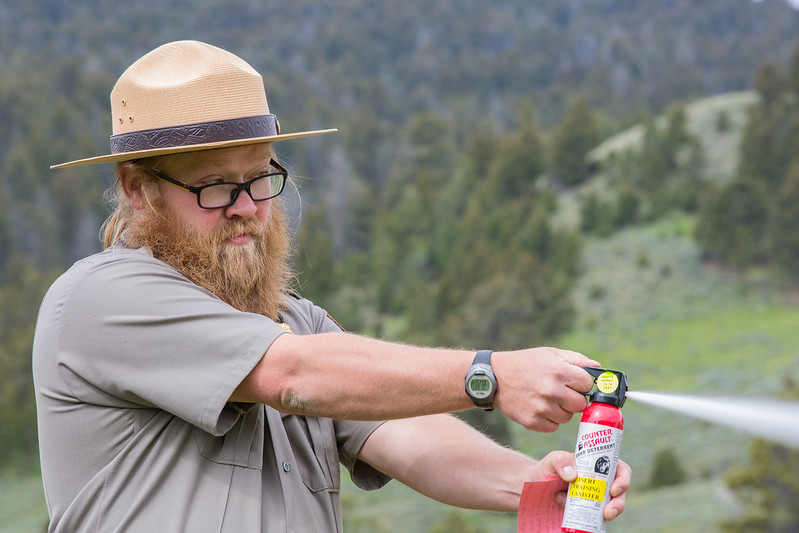
Safety in the Wild: A Guide to Boondocking with Confidence
Venturing into the wilderness for a boondocking adventure is an exciting and rewarding experience. However, it’s crucial to prioritize safety throughout your journey. Understanding potential hazards, being prepared for emergencies, and adopting responsible practices will ensure you have a safe and enjoyable time amidst nature’s grandeur.
Wildlife Encounters: Respecting Nature’s Boundaries
- Familiarize yourself with the types of wildlife you may encounter in your chosen boondocking location. Keep a safe distance from animals, especially if they exhibit signs of distress or aggression. Never approach, feed, or attempt to touch wildlife.
Weather Preparedness: Anticipating Nature’s Mood Swings
- Check weather forecasts regularly before and during your trip. Pack appropriate clothing and gear for the predicted weather conditions. Consider carrying a weather radio for real-time updates.
Emergency Protocols: Knowing What to Do in the Face of Adversity
- Familiarize yourself with emergency protocols for your chosen boondocking location. Know where to find help, how to contact emergency services, and how to signal for assistance if necessary. Carry a first aid kit and emergency supplies.
Key Safety Gear and Product Recommendations:
- Bear Spray: A non-lethal bear spray to deter and repel aggressive bears.
- Personal Locator Beacon (PLB): For sending distress signals in case of an emergency.
- Satellite Phone: Maintain communication in remote areas without cell phone coverage with a satellite phone
Additional Safety Tips:
- Store food properly to prevent attracting wildlife.
- Build a campfire safely and never leave it unattended.
- Dispose of waste properly to leave no trace of your presence.
- Respect other campers’ space and maintain a respectful distance.
- Know your limits and assess your skills and physical capabilities.
Image via Joshua Tree National Park / flickr
Responsible Camping Practices
Boondocking offers a unique opportunity to immerse oneself in the beauty of nature, away from the crowds and noise of traditional campgrounds. However, with this privilege comes the responsibility to minimize our impact on the environment and respect the natural spaces we inhabit. By adopting responsible camping practices, we can ensure that future generations can enjoy the same pristine wilderness we cherish today.
Minimizing Environmental Impact: Leaving No Trace
- Plan Ahead and Travel Prepared: Proper planning can help minimize your impact on the environment. Choose durable and eco-friendly camping gear. Plan your meals to avoid excessive food waste and pack out all trash.
- Travel and Camp on Durable Surfaces: Avoid creating new trails or trampling on vegetation. Stick to established paths and camp on designated campsites or hardened surfaces when possible.
- Dispose of Waste Properly: Pack out all trash, including food scraps, packaging, and personal hygiene products. Properly dispose of human waste by digging a cathole at least 200 feet away from water sources and trails.
- Minimize Campfire Impacts: Use existing fire rings or create a designated campfire area. Keep campfires small and controlled. Never leave a campfire unattended and ensure it is completely extinguished before leaving your campsite.
- Respect Wildlife: Observe wildlife from a distance and avoid disturbing their natural behavior. Never feed or approach wild animals. Store food securely to prevent attracting wildlife.
- Respect Natural and Cultural Features: Leave rocks, plants, and cultural artifacts undisturbed. Avoid damaging trees or carving initials.
Respecting the Boondocking Community: Sharing the Wilderness
- Choose a Campsite Considerately: Be mindful of other campers and choose a campsite that provides adequate privacy. Avoid camping near established campsites, water sources, or trails.
- Respect Quiet Hours: Observe quiet hours typically from 10 pm to 6 am. Keep noise levels low and avoid using generators or loud music during these times.
- Be Considerate of Others: Share common areas like fire pits and water sources responsibly. Respect personal space and avoid disturbing others’ enjoyment of the wilderness.
- Leave Your Campsite Clean: Leave your campsite as you found it, or even better. Pack out all trash, dispose of waste properly, and extinguish any campfires.
- Follow Local Regulations: Familiarize yourself with local regulations and restrictions regarding boondocking in the area. Respect these guidelines to ensure a safe and enjoyable experience for everyone.
By adopting these responsible camping practices, we can minimize our impact on the environment, respect the boondocking community, and ensure that the wilderness remains a pristine and enjoyable retreat for generations to come. Remember, we are all stewards of the natural world, and our actions today shape the legacy we leave for future wilderness enthusiasts.
Discover & Explore Digital Assets – National Park Service Gallery
Fostering Community Engagement
While the open road offers a sense of solitude and freedom, boondocking is also an opportunity to connect with a vibrant community of like-minded individuals. Here are some resources to help you dive deeper into the world of boondocking and engage with other enthusiasts:
- National Park Service (NPS) Photo Galleries: The NPS website offers extensive photo galleries that showcase America’s national parks, many of which are popular boondocking destinations. These galleries highlight diverse landscapes and are categorized by regions and parks.
- Flickr Groups: Flickr hosts numerous RVing and camping groups where users can find region-specific photo galleries. Members can contribute their own photos and experiences, fostering a sense of community among boondockers.
- Instagram Hashtags and Accounts: Platforms like Instagram offer a wealth of user-generated content. Encourage readers to explore hashtags like #Boondocking, #RVLife, and #CampingAdventures, or follow accounts dedicated to RV travel and boondocking. This allows for a dynamic, up-to-date source of community-shared content.
- Roadtrippers Magazine: Roadtrippers features photo essays and stories about various road trip destinations, including boondocking sites. The website is a great resource for both visual inspiration and practical travel tips.
- Campendium: Known for its extensive database of camping locations, Campendium includes user reviews and photos, providing real-world insights into various boondocking sites across different regions.
By engaging with these platforms and resources, boondockers can connect with a broader community, share their experiences, and discover new destinations. Embracing these interactive elements not only enriches your own adventures but also contributes to the collective knowledge and enjoyment of the boondocking community.
Image by Siggy Nowak from Pixabay
Conclusion: Embark on Your Boondocking Adventure
Boondocking offers a unique and rewarding experience, allowing you to connect with nature, escape the hustle and bustle of everyday life, and create lasting memories amidst breathtaking landscapes. This guide has provided you with a comprehensive overview of boondocking, from essential gear and safety tips to responsible camping practices and a selection of the best boondocking sites across the United States.
As you embark on your boondocking adventures, remember that the essence of this experience lies in embracing the simplicity and freedom of off-grid camping. Leave your worries behind, immerse yourself in the beauty of your surroundings, and appreciate the tranquility of the natural world. Respect the wilderness, leave no trace of your presence, and share the joy of boondocking with fellow enthusiasts.
Whether you’re seeking solitude amidst towering mountains, the thrill of camping near crashing waves, or the tranquility of serene lakes and forests, the world of boondocking awaits you with open arms. Discover the hidden gems, explore the diverse landscapes, and create unforgettable memories that will forever be etched in your heart.
Here’s to your boondocking adventures!
Additional Resources and Further Reading
To further enhance your boondocking knowledge and experience, here are some valuable resources and websites. These platforms offer in-depth information, tips, and guidelines to ensure you have a safe, enjoyable, and environmentally responsible boondocking adventure.
- National Park Service (NPS): A comprehensive resource for exploring America’s national parks, many of which offer boondocking opportunities. Access detailed information about park features, regulations, and camping options.
- Explore at National Park Service Official Website.
- Bureau of Land Management (BLM): Discover a wide range of boondocking sites on public lands managed by the BLM. The site provides information on locations, access, and camping regulations.
- Visit Bureau of Land Management Camping for more details.
- Recreation.gov: An invaluable tool for finding and reserving campsites across the U.S., including many boondocking locations. The site offers a user-friendly interface and real-time availability updates.
- Find campsites at Recreation.gov – Camping & Cabins.
- U.S. Forest Service: Learn about dispersed camping in national forests, a popular option for boondocking. The site provides insights into camping in these areas, along with guidelines for preserving the natural beauty of forests.
- Detailed information available at USFS Dispersed Camping.
- Leave No Trace Center for Outdoor Ethics: Understand and practice the seven principles of Leave No Trace to protect and enjoy our natural spaces responsibly. This resource is crucial for environmentally conscious boondockers.
- Learn more at Leave No Trace Seven Principles.
These resources offer a wealth of information for both novice and experienced boondockers, covering everything from site selection and preparation to responsible camping practices. We encourage you to explore these resources to enhance your understanding and enjoyment of boondocking.
Featured Image by Siggy Nowak from Pixabay

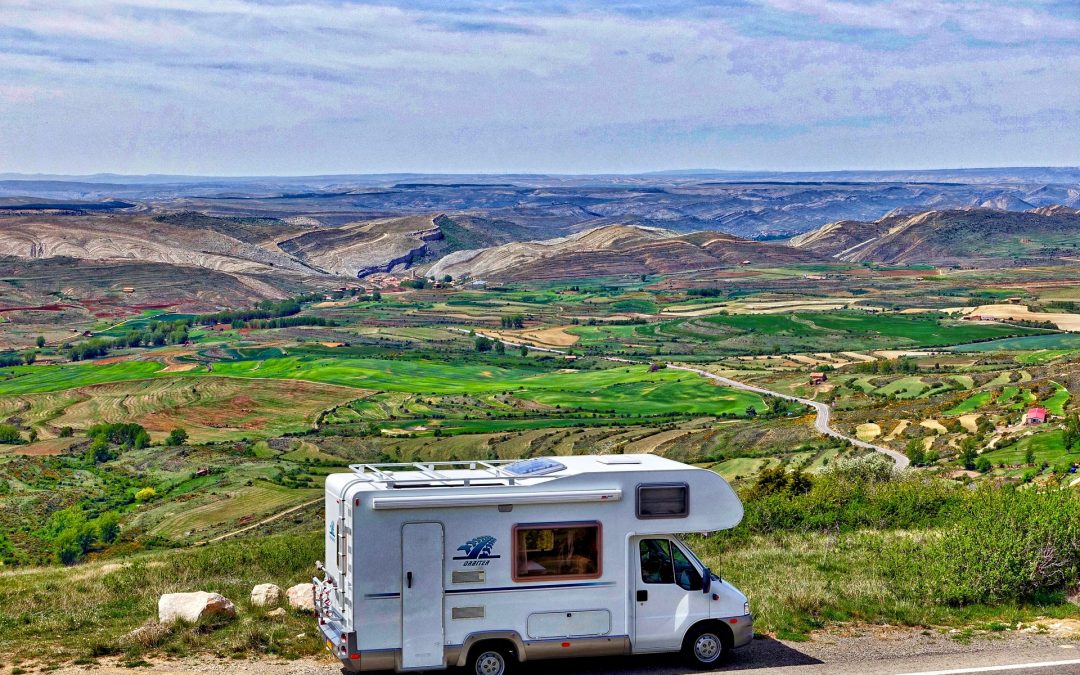
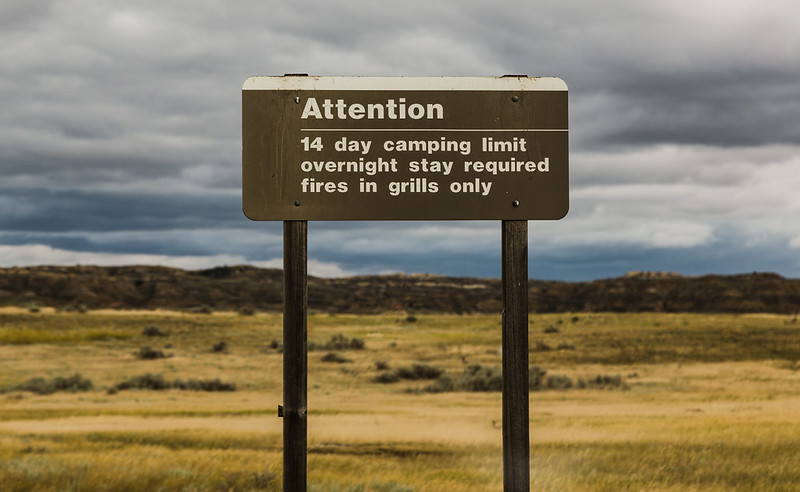
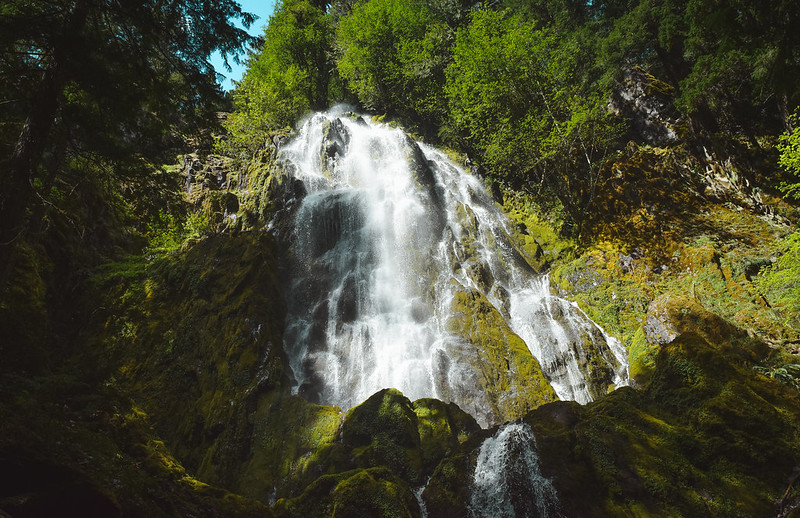
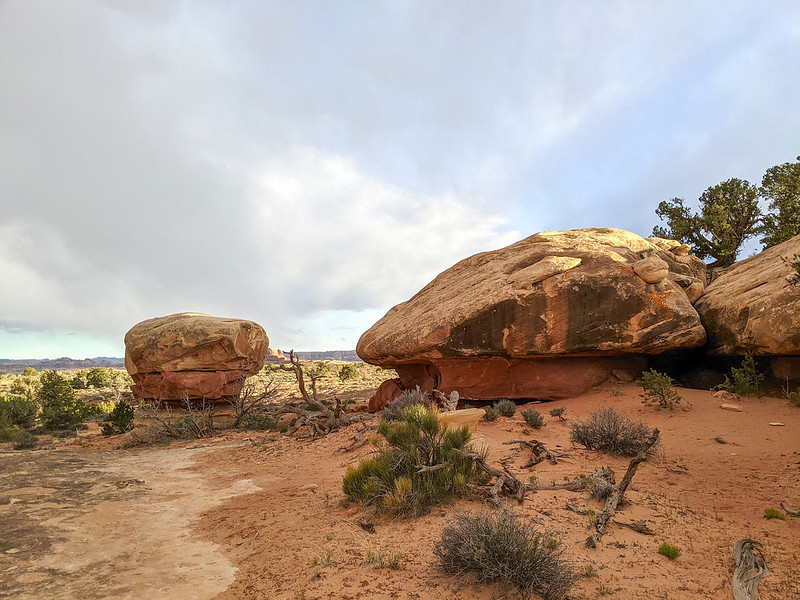
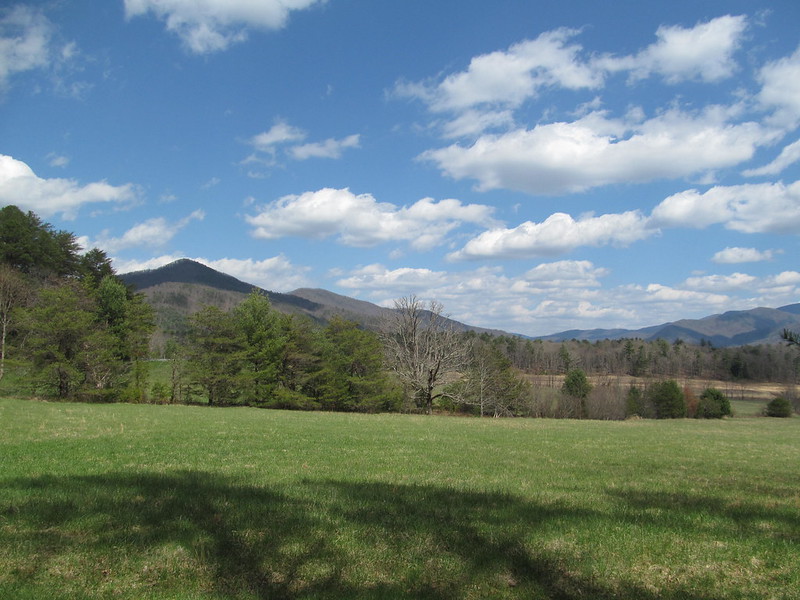
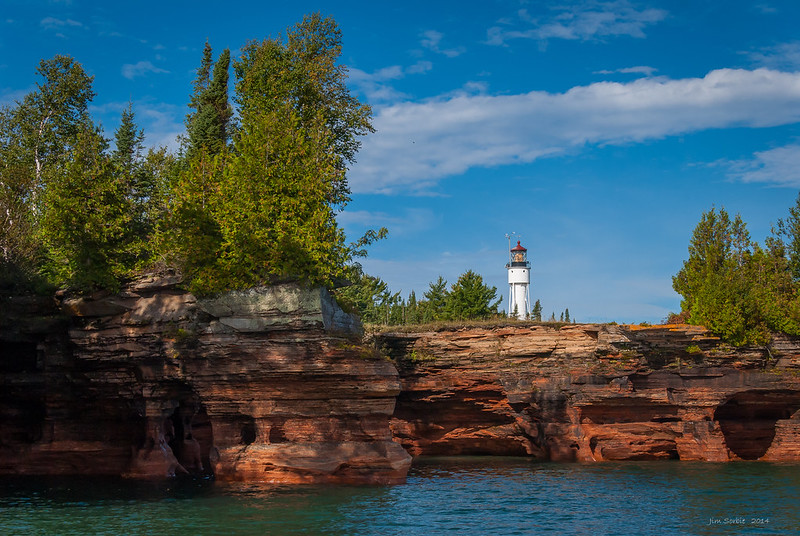
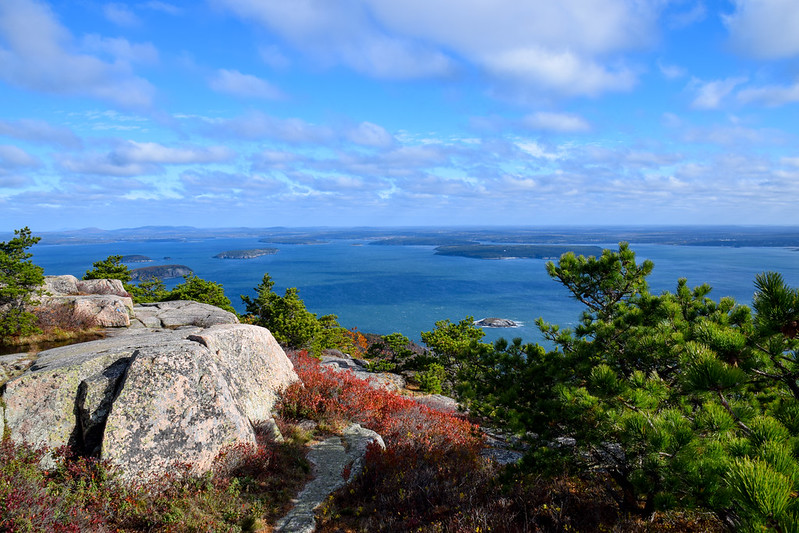
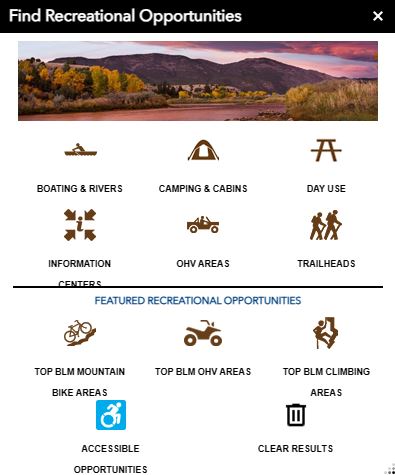
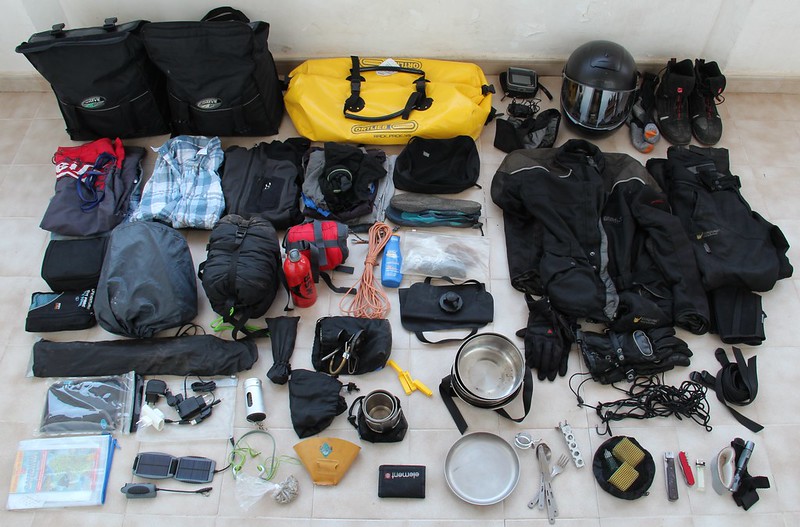
 What People are Saying:
What People are Saying: